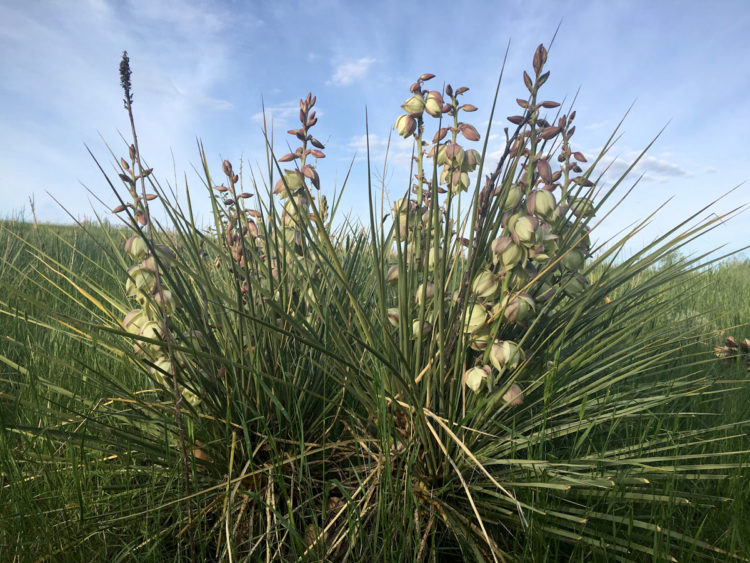
On Memorial Day last year we were still snowboarding at A-Basin, the snow drifts in the backyard were up to the life-sized metal deer’s neck, and the yuccas down Denver-way waited until late June to bloom. This year, the snow is gone except for a handful of high elevation chutes and the yucca is in full bloom down the hill, a month ahead of last year.
Who can understand nature’s whim? Is her massive schedule change a punishment for our squandering of her resources, or is she just in one of her moods? Either way I figure we might as well take advantage of the yucca bounty now while the plants are in bloom.
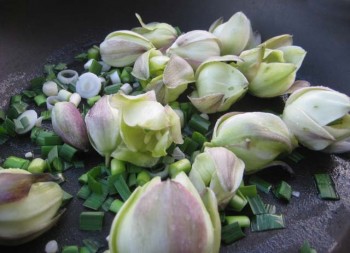
Both Yucca and Yuca Are Delicious
Yucca is not the same as yuca or cassava (Manihot esculenta), the delicious and starchy potato-like root popular in Caribbean cooking.
Instead, wild yuccas (Yucca spp.), which cover miles of dry zones throughout the Western United States, have edible flowers, buds, and fruits. They are particularly conspicuous when in bloom, their waxy, bulbous white flowers dangling dense upon tall, upright flower stalks. In our common Colorado species, Yucca glauca aka soapweed yucca, there is one flower stalk per basal set of spiky leaves, and the flowers, while creamy white, often have pinkish/purple outer petals upon them. I usually collect flowers from high up the stalk to avoid coming into contact with them.
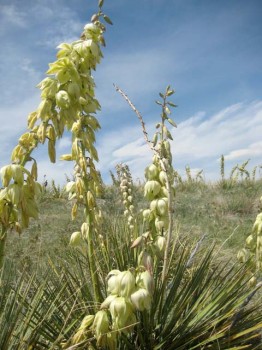
Collecting Wild Yucca
After two years foraging Yucca glauca flowers on clandestine missions from questionable locations where we were unsure if we were welcome, this year I was able to collect them in full comfort in the good company of my friend Butter, who escorted me to a solitary hillside covered with them.
We went for plants not yet invaded by armies of bugs (you can tell instantly if they are because they will be crawling with them). Butter snapped a few flowers from each central spike by hand, while I looked inside each flower for bugs and then snipped my batch with a pair of scissors, leaving plenty of flowers on each spike before moving on to the next plant.
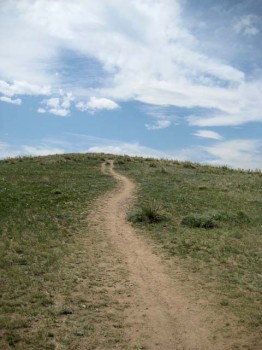
Reproductive Structures: To Eat or Not to Eat?
Some authors say to eat only the petals of the yucca flower, but when I cook my local Yucca glauca flowers, I always eat the reproductive structures—the style, ovary, and stamens—that make up the flower’s center where the petals attach. The center has a pleasing crunch to it, like a vegetable.
For stir fry, I like to separate the center from the petals, chop up the centers to sauté first with garlic, onions, or other veggie that needs a longer time in the pan, and then throw the soft petals in last. I also enjoy tossing entire flowers into soups. Just the other day, Butter made me a mouthwatering breakfast of corn-batter-fried whole yucca flowers stuffed with goat cheese and feral garlic.
Note that there is some debate whether one should eat the yucca flower centers. They can be more bitter and may contain more saponins. However I have seen people cook and eat them from other species in regions where yucca flowers are eaten traditionally. I have not experienced an ill effect but loose stools might be one of them.
Eat Your Nature Soap and Let It Cleanse You
“Yucca contains saponins and other compounds that may cause nausea and vomiting if consumed in large quantities, especially when eaten raw,” Tilford (1997) cautions. That said, dietary saponins have the potential to lower blood cholesterol levels.
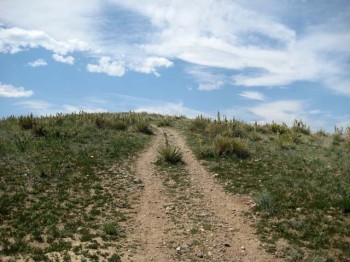
In terms of the “large quantities” to be avoided, I assume that means one should not eat pounds of the stuff in a single sitting. Over the last week, Gregg and I have eaten close to 15 cooked yucca flowers a day each with neither nausea nor vomiting resulting.
Eating Your First Yucca Flower
If you’re new to it, start with just one flower. Eat a raw petal or two and wait to see how it treats you. According to Cattail Bob Seebeck (1998), both the flowers and buds can be eaten raw, though “some people report a disagreeable aftertaste and/or laxative effect with this plant.” True to that statement, Gregg ate a whole, raw flower bud once and experienced an uncomfortable, scratchy feeling in the back of his throat—which is why a safer approach is to start with only one or two petals and not the whole bud.
The other option is to cook your first yucca flower. If you want to be extra cautious, remove the flower center and sauté just the petals in some olive oil until they turn bright translucent green. Then eat them and wait 24 hours to see how you feel. If all goes well, increase quantity slightly and test again for good measure. Once you are comfortable that yucca agrees with you, you can start playing with recipes.
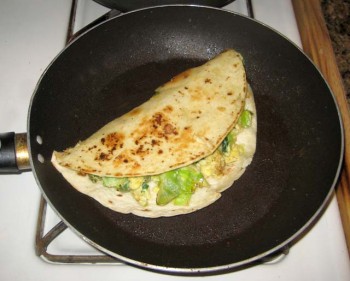
Yucca Breakfast Taco
I like yucca with eggs, and this giant breakfast taco came out great. I used 15 yucca flowers, 2 eggs, a spring bulb of feral garlic along with the greens, 1 Tbsp Parmesan cheese, a big flour tortilla, Southwestern spices, a dash of milk, and a dash of oil.
Instructions:
- Wash buggies out of yucca flowers if necessary. Separate flower “center” from petals and chop center into small chunks.
- In a separate bowl, whisk eggs with a splash of milk. Stir in Parmesan cheese, chopped feral garlic or green onion, and yucca flower petals.
- Sauté centers in oil with a sprinkle of Southwest seasoning until just before they brown, then pour in egg mixture and scramble until eggs are cooked.
- Remove egg mixture from the pan.
- Put a smidge more oil in the pan, then lay the tortilla in it. Spoon the cooked egg mixture onto half the tortilla. Cook on medium low for a few minutes before carefully folding the tortilla around the eggs. Cook and flip until the tortilla is lightly browned.
- Serve with a sprinkle of Parmesan cheese on top. If you want to be really fancy, garnish with a whole yucca flower sautéed separately with a dash of Southwest seasoning. This makes a really big breakfast taco.
Gregg was a fan, so hopefully you will be too.
Updated 2.20.21

Bless your wonderment-hunting heart! Thank you for sharing